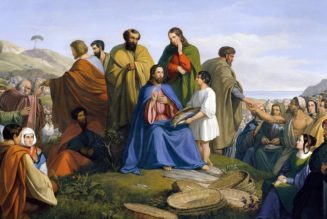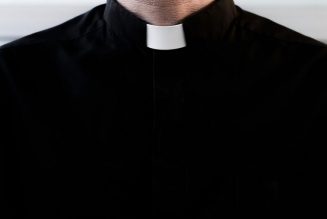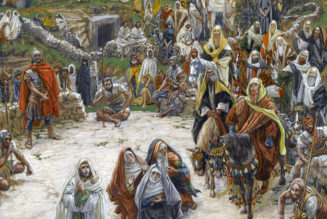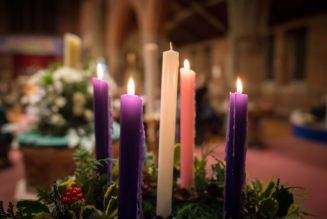, January 30, 2020
The Feast of the Presentation this Sunday shows how a single encounter with Jesus Christ can make a whole life worthwhile.
In Sunday’s readings, the Holy Family meet two people who have no family.
We will hear the same Sunday Gospel twice this year, once in December’s Feast of the Holy Family and this Sunday’s Presentation feast day, which is the World Day for Consecrated Life. The December feast will show what family intimacy with Christ looks like. This Sunday shows what intimacy with Christ looks like for religious.
Simeon is a model religious. “This man was righteous and devout,” we learn, “and the Holy Spirit was upon him.”
The Spirit is very strong with him. “It had been revealed to him by the Holy Spirit that he should not see death before he had seen the Christ of the Lord,” we learn, so “He came in the Spirit into the temple.”
But Simeon isn’t alone in recognizing Christ in the Temple. Anna also appears on the scene. She is a “prophetess” who “never left the temple, but worshiped night and day with fasting and prayer.”
These are two people who know God very well.
Because they know what God is like, consecrated people know what life is like.
The consecrated celibate life gives witness to our hope that there is something more to life than what the earth offers. It is not easy to do that.
We recently had three religious sisters over for dinner and we got to talking about what Mother Teresa suffered. After having an intimate closeness with Jesus Christ early in consecrated life, she felt a terrifying absence of him in her life that lasted 50 years.
“But isn’t that the vocation of every consecrated person?” one of the sisters asked.
It is. There are two Gerard Manley Hopkins poems that show how this works. As an undergraduate student, he wrote the poem “Heaven-Haven” about a nun entering consecrated life. He sees her entering a life of peace and rest: “I have asked to be / Where no storms come, / Where the green swell is in the havens dumb, / And out of the swing of the sea.”
But later, after living in the consecrated life himself, he wrote “The Wreck of the Deutschland,” a poem that compares the shipwreck and drowning of a group of Franciscan nuns to the religious vocation. In that poem, the nuns learn “Thy terror, O Christ, O God” and see “Before me, the hurtle of hell.” He has learned that religious life is very much “in the swing of the sea.”
This is what Jesus experienced also. He “shared in blood and flesh,” says the Second Reading, the Letter to the Hebrews, “that through death he might destroy the one who has the power of death, that is, the Devil,” and “he had to become like his brothers and sisters in every way … to expiate the sins of the people. Because he himself was tested through what he suffered.”
Jesus always brings his cross, and we will always be tested in the storm like he was.
This is why Simeon says: “Behold, this child is destined for the fall and rise of many in Israel, and to be a sign that will be contradicted … so that the thoughts of many hearts may be revealed.”
He knew very well what Malachi predicted in Sunday’s First Reading.
“Yes, he is coming, says the LORD of hosts. But who will endure the day of his coming? And who can stand when he appears?” says the prophet. “He will sit refining and purifying silver, and he will purify the sons of Levi, refining them like gold or like silver that they may offer due sacrifice to the Lord.”
God is almighty, and his terrifying glory will burn up everything that isn’t pure.
But Simeon and Anna in their consecrated life would have been familiar with this Sunday’s Psalm.
“Who is this king of glory? It is the Lord!” Psalm 24 proclaims. “Lift up, O gates, your lintels; reach up, you ancient portals, that the king of glory may come in!”
Jesus is both things to us: The terrifying test and the exhilarating reward.
In the end, the message of Mother Teresa’s life isn’t that Christians need to have the mental fortitude to suffer 50 years of darkness. It is that a real encounter with Jesus Christ like she had can deliver a joy so great it turns crosses into joys.
Mother Teresa’s intimate encounter with Jesus in the first years of her consecration was enough to make her “an apostle of joy” through 50 years of darkness.
The encounter Simeon has with Jesus inspires him to say, “Now, Master, you may let your servant go in peace, according to your word, for my eyes have seen your salvation.”
Anna’s encounter turned her into an evangelist who “gave thanks to God and spoke about the child to all who were awaiting the redemption of Jerusalem.”
This is the joy that the consecrated vocation bears witness to, giving us all hope that there is something more.
Tags: prayer, Presentation of the Lord, Sunday Gospel, Sunday Readings
Never miss a post! Subscribe below to our weekly newsletter.








